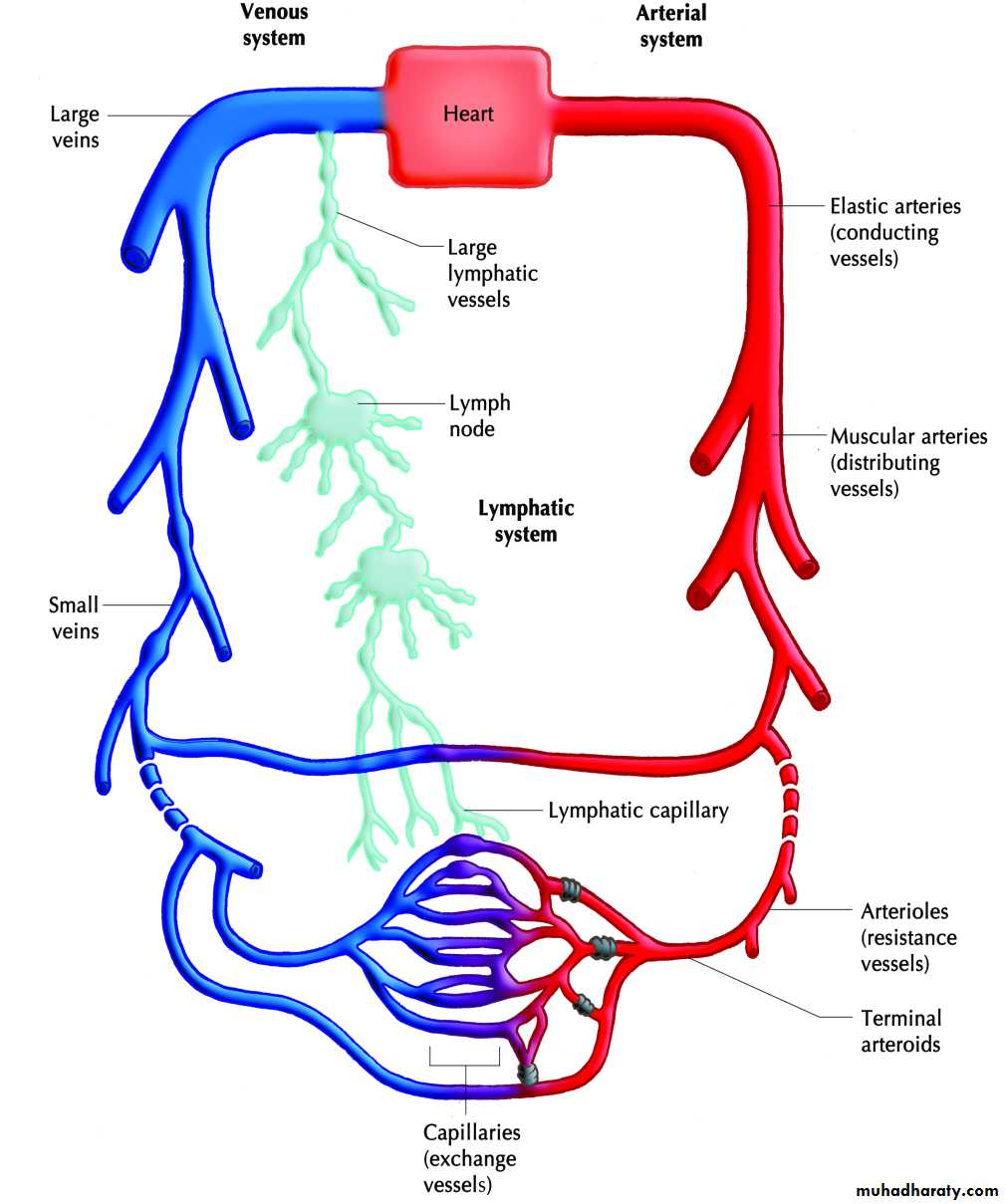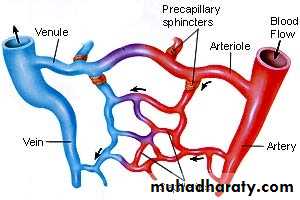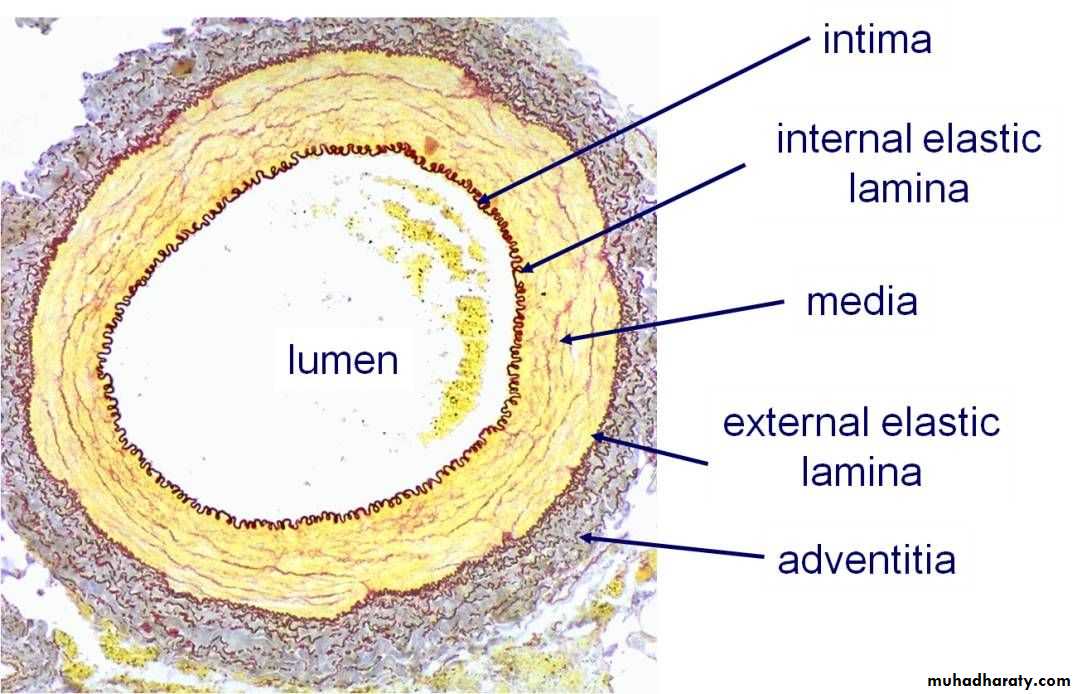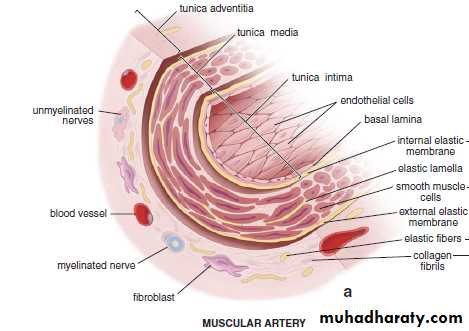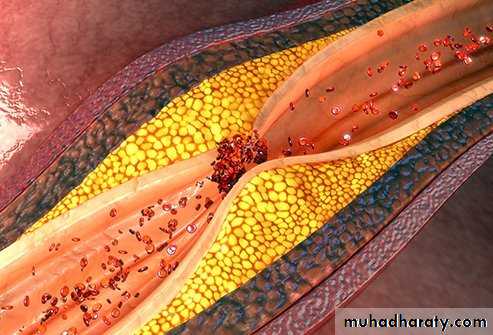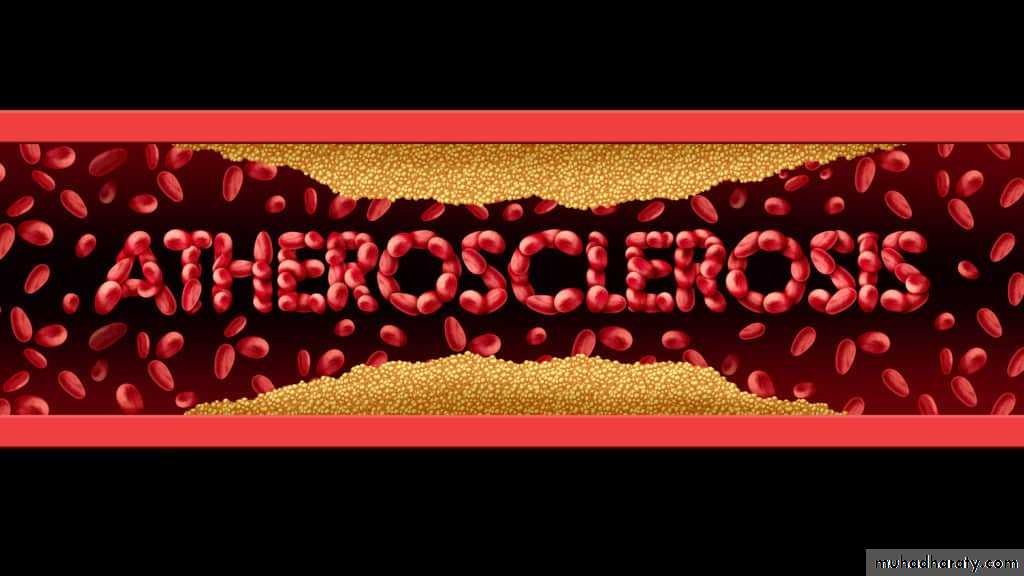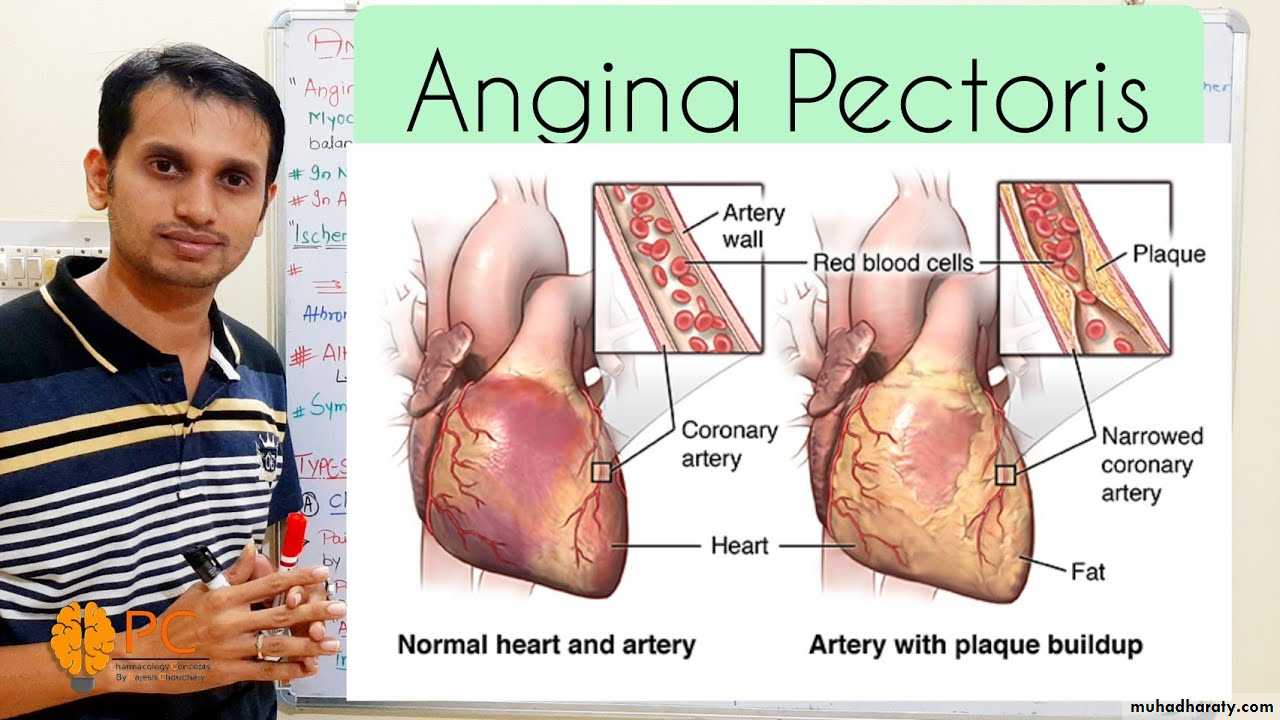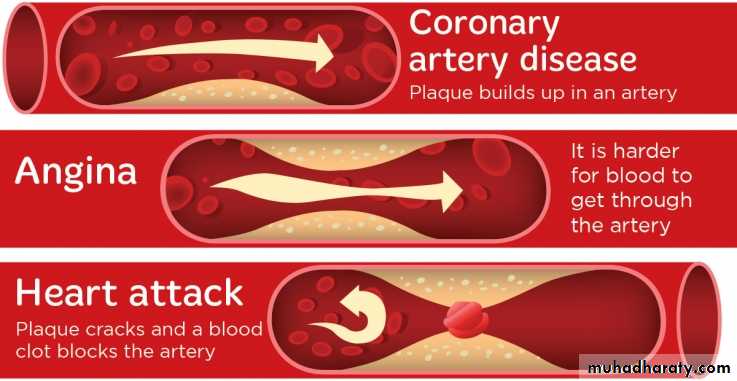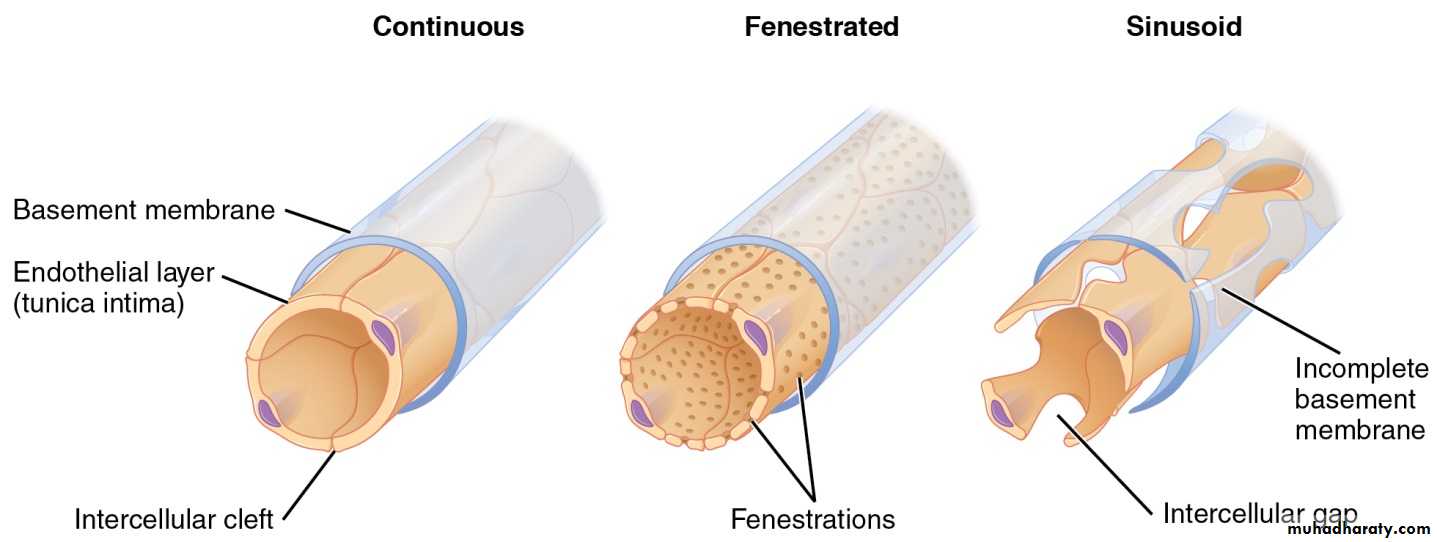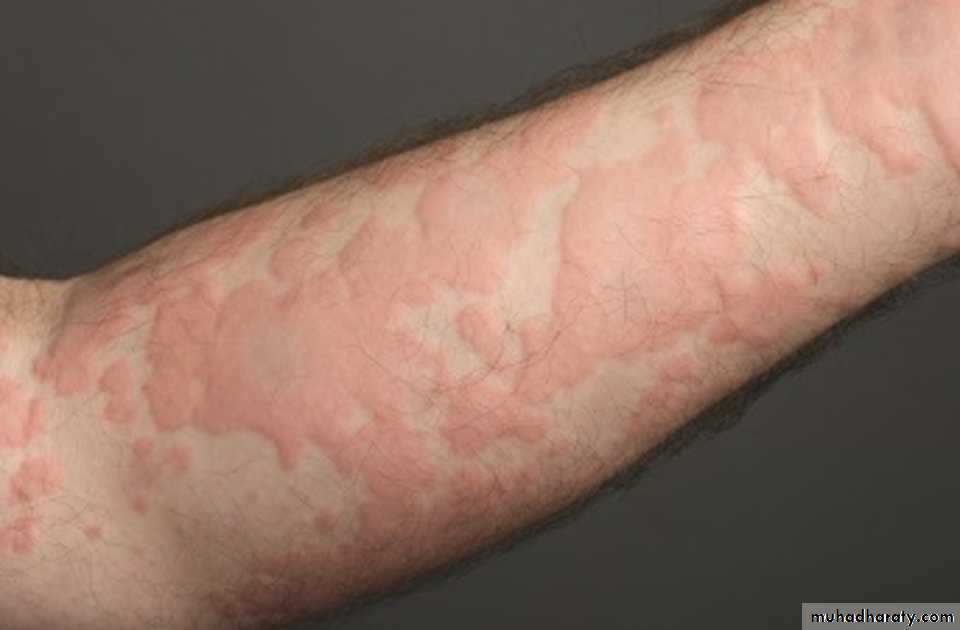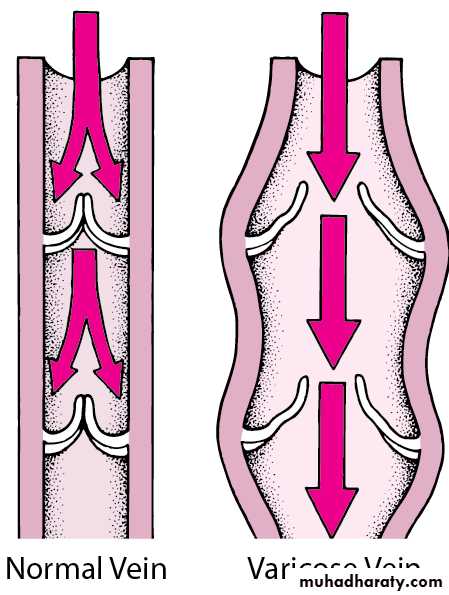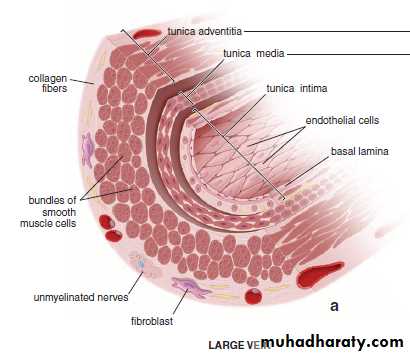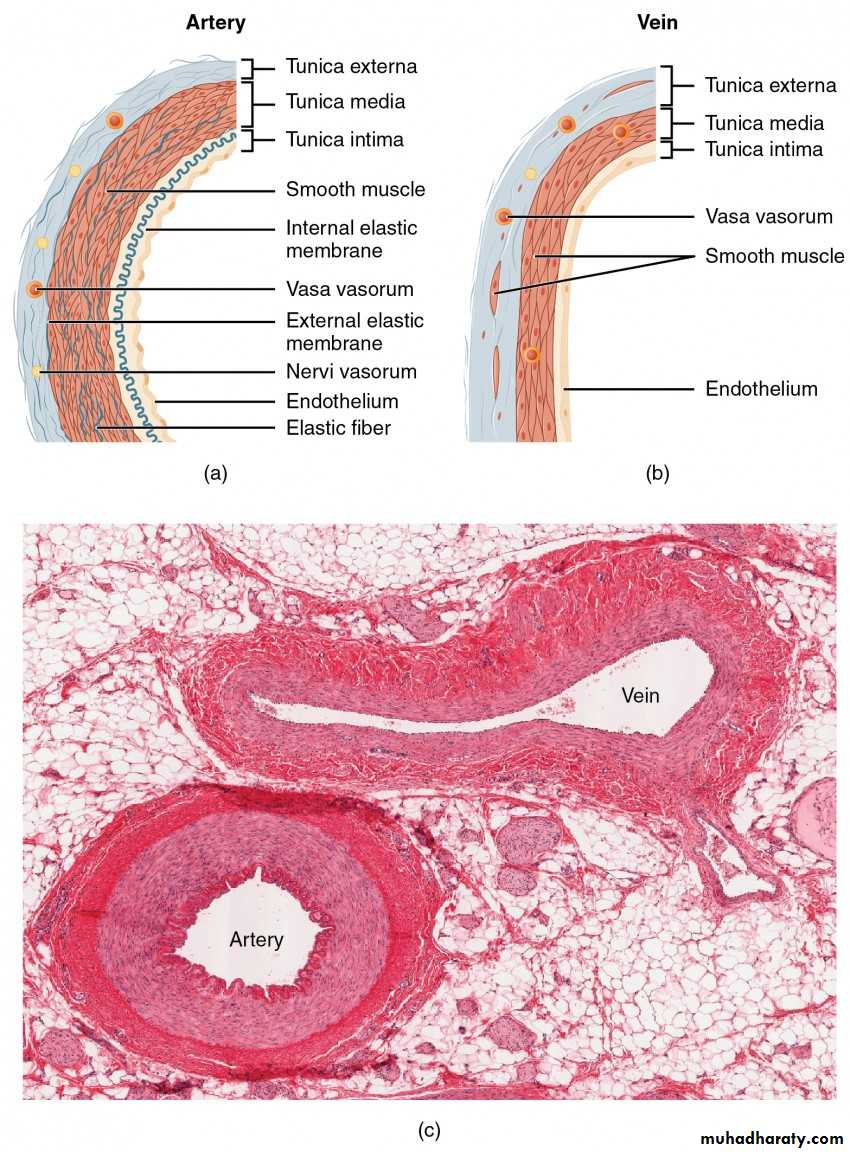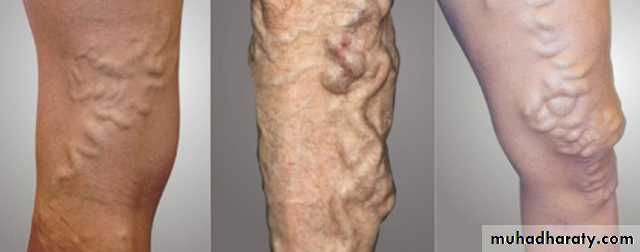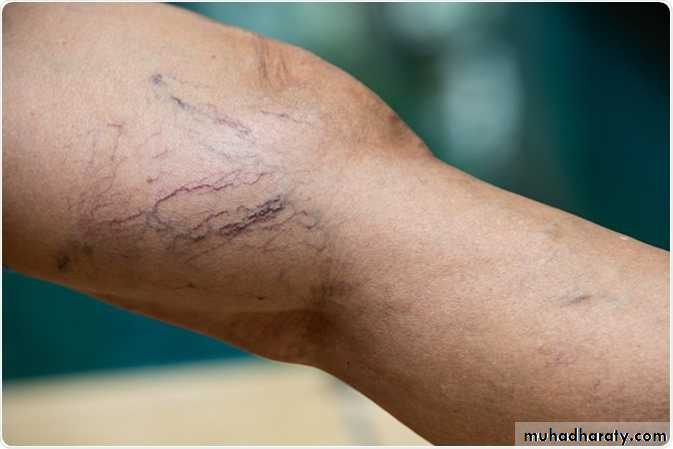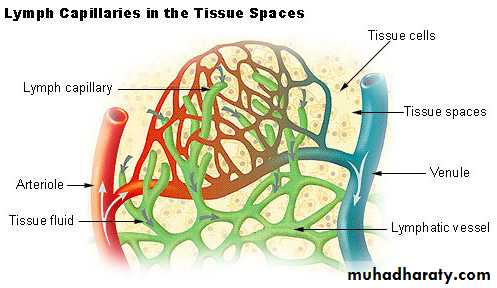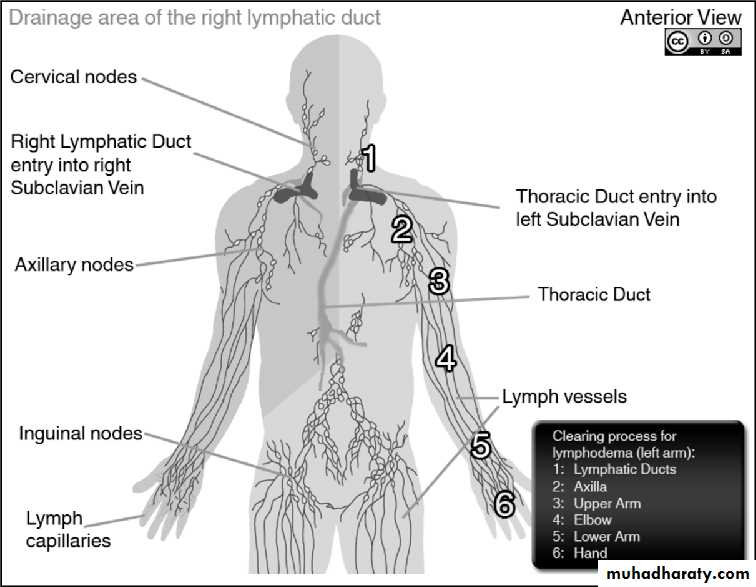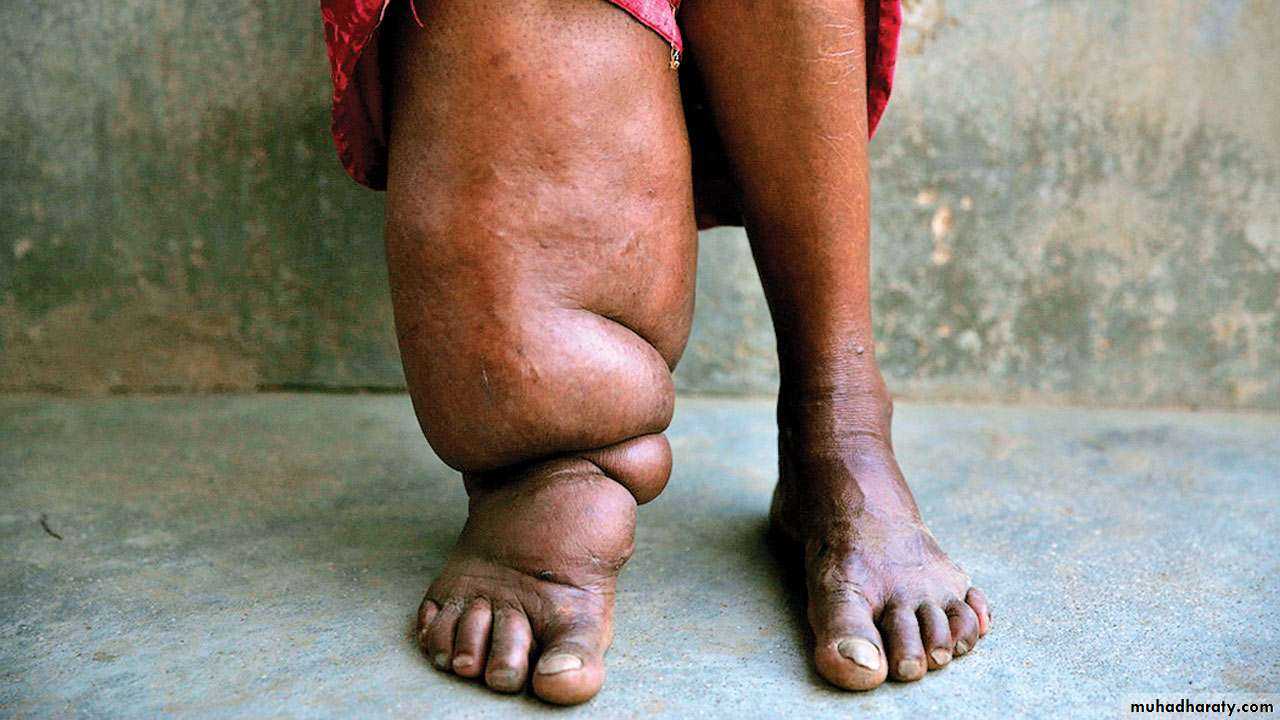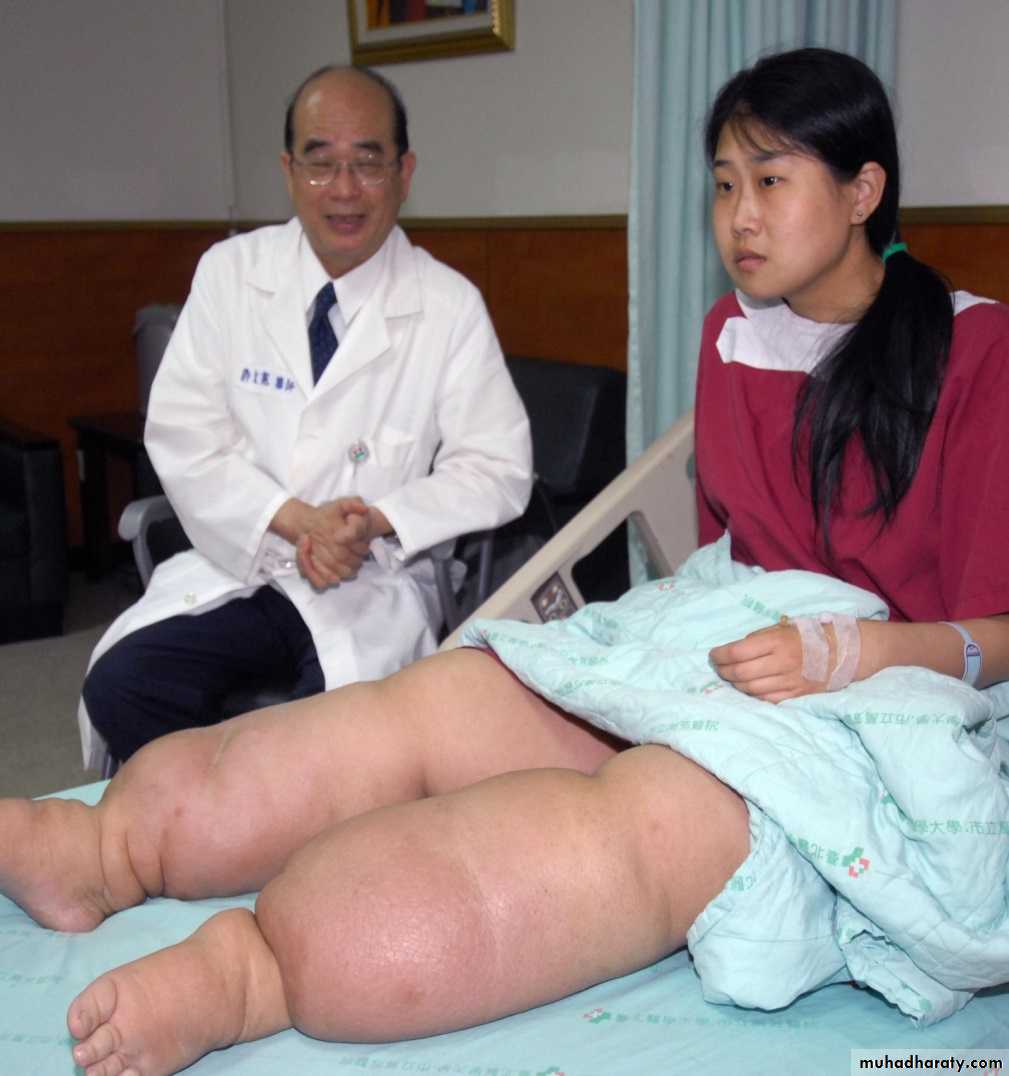Blood Vessels
ByDr.Alaa Al-sahlany
Jan 13, 2021
TYPES OF BLOOD VESSELS
1. Arteries: (a) Large artery (b) Medium sized artery2. Arterioles
3. Capillaries4. Venules
5. Veins:(b) Large vein (a) Medium-sized veinGeneral Structure
(a) Tunica intimaIs composed of lining endothelium (simple squamous epithelium) and subendothelial connective tissue.
Sometimes Tunica intima is demarcated from tunica media by internal elastic lamina
.(b) Tunica media
Is made of smooth muscle and connective tissue.Sometimes it is thickened and demarcated from adventitia by external elastic lamina
(c) Tunica adventitiaIt is composed of elastic connective tissue.
It carry small blood vessels (vasa vasorum) and sympathetic fibers.
1. Large (Elastic )artery
Aorta and its branches are examplesPresence of elastic fibers in the wall allows it to expand during contraction (systole) and to recoil during relaxation (diastole) of heart.
Tunica media mainly made of elastic lamellae
2. Medium-sized(Muscular )artery
Radial and ulnar arteries are examplesPresence of smooth muscle in its wall helps to control pressure of blood through
vasoconstriction or vasodilatation.Tunica media consists mainly of smooth muscle cells. Hence the name muscular artery
Myocardial infarction
( complete occlusion of artery)Angina
(stenosis of artery)
ARTERIOLE
It has a thick wall relative to the size of its small lumenServe as flow regulators for the capillary beds
CAPILLARIES
Arterioles break up into small blood vessels called capillaries which are the smallest diameter blood vesselsThey are involved in exchange of gases, nutrients and metabolites between blood and tissue.
Tissues with high metabolic rates have abundant capillary network (e.g. liver, cardiac muscle).
Types of capillaries
1. Continuous capillaryIt is the commonest type of capillary present in muscle, brain, etc.
The endothelial cells form a continuous lining of the capillary
2. Fenestrated capillary
Characterized by the presence of pores(fenestrations) in the endothelial cells.These pores are allows substances and molecules to pass through.
The permeability of fenestrated capillary is much greater than that of continuous capillary therefore found in tissues in which rapid exchange of substances occur3. Sinusoidal capillary
Found in liver and haemopoietic organs like bone marrow and spleen and liver.Lumen is lined by discontinuous endothelium (the basal lamina is discontinuous) forming gaps that permit the passage of blood cells and large
Telangiectasia(dilated capillaries)
Spider angiomaVenules
Venules receive blood from capillariesOnly postcapillary venules take part in exchange of metabolites between blood and tissue as do capillaries.
Venules are sensitive to inflammatory mediators resulting in leakage of fluids and white blood cells
Due to leakage of fluid from venules to tissue
as response to histamineVEINS
Veins are thin-walled blood vessels that carry blood from capillaries to heart.
They are often provided with valves which serve to prevent the reflux of the blood
2. Large vein
Superior vena cava and inferior vena cava are examplesTunica media:
It is thin or absent.Tunica adventitia:
It is the thickest coat.1. Medium-sized vein
Medium-sized vein differs from medium-sized artery in having a collapsed lumenTunica adventitia:
It is the thickest coat.
Varicose veins
Valves are non-functioningLymphatic vessels
The lymphatic vessels are unidirectional(have valves), conveying fluid (only from tissues)
The largest lymphatic vessel ( draining most of the body and emptying into the veins on the left side) is the thoracic duct. The other main channel is the right lymphatic trunkBecause of their greater permeability, lymphatic capillaries are more effective than blood capillaries in removing protein-rich fluid from the extracellular spaces
.
Before lymph is returned to the blood, it passes through lymph nodes, where it is exposed to the cells of the immune system
Elephantiasis
Lymphatic obstruction

